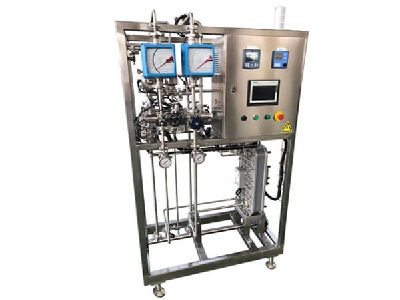In the modern food and beverage industry, ensuring product quality is crucial. As consumers' focus on health continues to rise, the water quality requirements for food and beverages have become stricter. Traditional well water and tap water can no longer meet these demands. Therefore, reverse osmosis purified water generation systems have become the industry's top choice. This article will explore how to determine the production water volume of reverse osmosis purified water generation systems, to help users select the most suitable equipment.
The production water volume of pharmaceutical reverse osmosis systems mainly depends on the specifications and configuration of the RO membranes. When selecting equipment, understanding the type and number of RO membranes is a key factor in determining the production water volume. RO membranes are usually available in two sizes: 4 inches and 8 inches. These membranes are installed within membrane housings, which are generally made of fiberglass or stainless steel, and are configured as either one housing one core or one housing two cores. Understanding this basic information can help us accurately assess the water output of the equipment.
To determine the production water volume of reverse osmosis purified water generation systems, we need to consider the configuration of the RO membranes. For example, a 4-inch membrane has an output of approximately 0.25 tons per hour. If the equipment uses four 4-inch RO membranes, its total output is 1 ton per hour. Similarly, the output of an 8-inch membrane is about 1 ton per hour. If a larger output is needed, manufacturers typically recommend using 8-inch membranes, which not only provide greater water volume but also make the equipment more compact and aesthetically pleasing.
In practical applications, a single-stage reverse osmosis system usually consists of a high-pressure pump and an RO membrane. To accurately determine the output of the equipment, you can calculate the number and type of membranes. For instance, the production water volume of a six-ton single-stage system can be determined by calculating the output of each membrane and the number of membranes. Typically, the membrane housing in the equipment contains three housings, with each housing having two cores.
To choose the right reverse osmosis purified water generation system, you need to comprehensively consider the production water volume of the equipment, the specifications of the membranes, and the overall design of the equipment. With technological advancements, there is a wide variety of reverse osmosis equipment available in the market to meet the water needs of different fields. When purchasing, besides considering the water output of the equipment, you should also pay attention to the long-term stability and maintenance costs of the equipment. Choosing a reputable water treatment equipment manufacturer can provide more accurate equipment configuration advice and technical support.
In conclusion, understanding the factors for determining the output of reverse osmosis purified water generation systems can help users make more appropriate choices, ensuring that the water quality requirements of the food and beverage industry are met. By thoroughly understanding the RO membrane specifications and equipment configuration, users can better evaluate the performance of the equipment and select the purified water generation system that best meets their needs.


